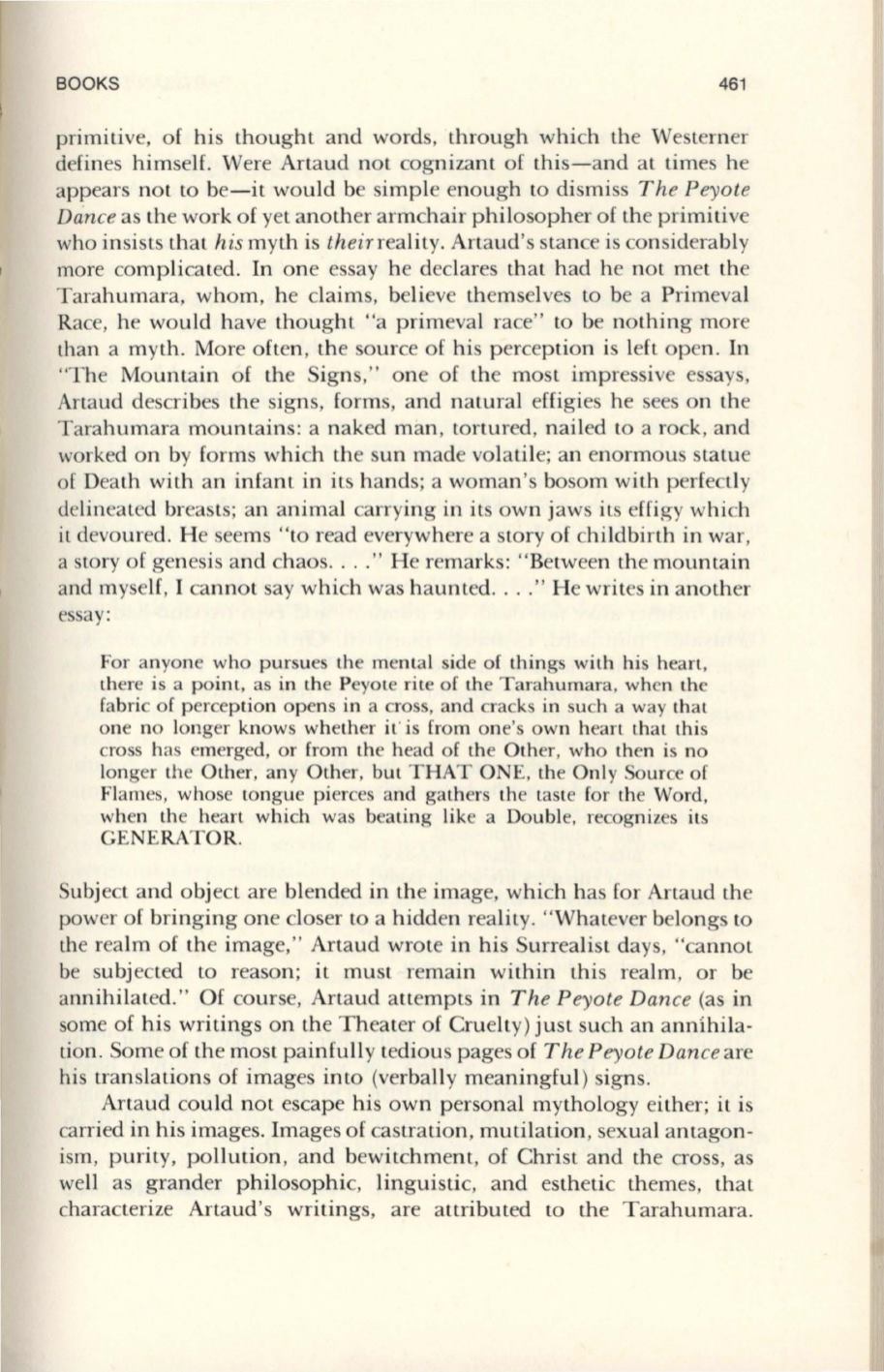
BOOKS
461
prim1l1ve, of his thought and words, through which the Westerner
defines himself. Were Artaud not cognizant of this-and at times he
appears not to be-it would be simple enough to dismiss
The Peyote
Dance
as the work of yet another armchair philosopher of the primitive
who insists that
his
myth is
theirreality .
Artaud's stance is considerably
more complicated.
In
one essay he declares that had h e not met the
Tarahumara, whom, he claim, believe themselves to be a Primeval
Race, he would have thought "a primeval race" to be nothing more
than a myth. More often, the source of his perception is left open.
In
"The Mountain of the Signs," one of the most impressive essays,
Artaud describes the signs, forms , and natural effigi es he sees on the
Tarahumara mountains: a naked man , tortured, nailed to a rock, and
worked on by forms which the sun made volatile; an enormous statue
of Death with an infant in its hands; a woman's bosom with perfectly
delineated breas ts; an animal carrying in its own jaws its effigy which
it devoured. He seems "to read everywhere a story of childbirth in war,
a story of genesis and chaos . ... " He remarks: "Between the mountain
and myself, I cannot say which was haunted. . .. " He writes in another
essay:
For anyone who pursues the mental side of things with his heart,
there is a point, as in the Peyote rite of the Tarahumara, when the
fabric of perception opens in a cross, and cracks in such a way that
one no longer knows whether it' is from one's own heart that this
cross has emerged, or from the head of the Other, who then is no
longer the Other, any Other, but THAT ONE, the Only Source of
Flames, whose tongue pierces and gathers the taste for the Word ,
when the heart which was beating like a Double, recognizes its
GE ERATOR.
Subject and object are blended in the image, which has for Artaud the
power of bringing one closer to a hidden reality. "Whatever belongs to
the realm of the image," Artaud wrote in his Surrealist days, "cannot
be subjected to reason; it must remain within this realm, or be
annihilated." Of course, Artaud attempts in
The Peyote Dance
(as in
some of his writings on the Theater of Cruelty) just such an annihila–
tion. Some of the most painfully tediou pages of
The Peyote Dance
are
his translations of images into (verbally meaningful) signs.
Artaud could not escape his own personal mythology either; it is
carried in his images. Images of castration, mutilation, sexual antagon–
ism, purity, pollution, and bewitchment, of Christ and the cross, as
well as grander philosophic, linguistic, and esthetic themes, that
characterize Artaud's writings, are attributed to the Tarahumara.


